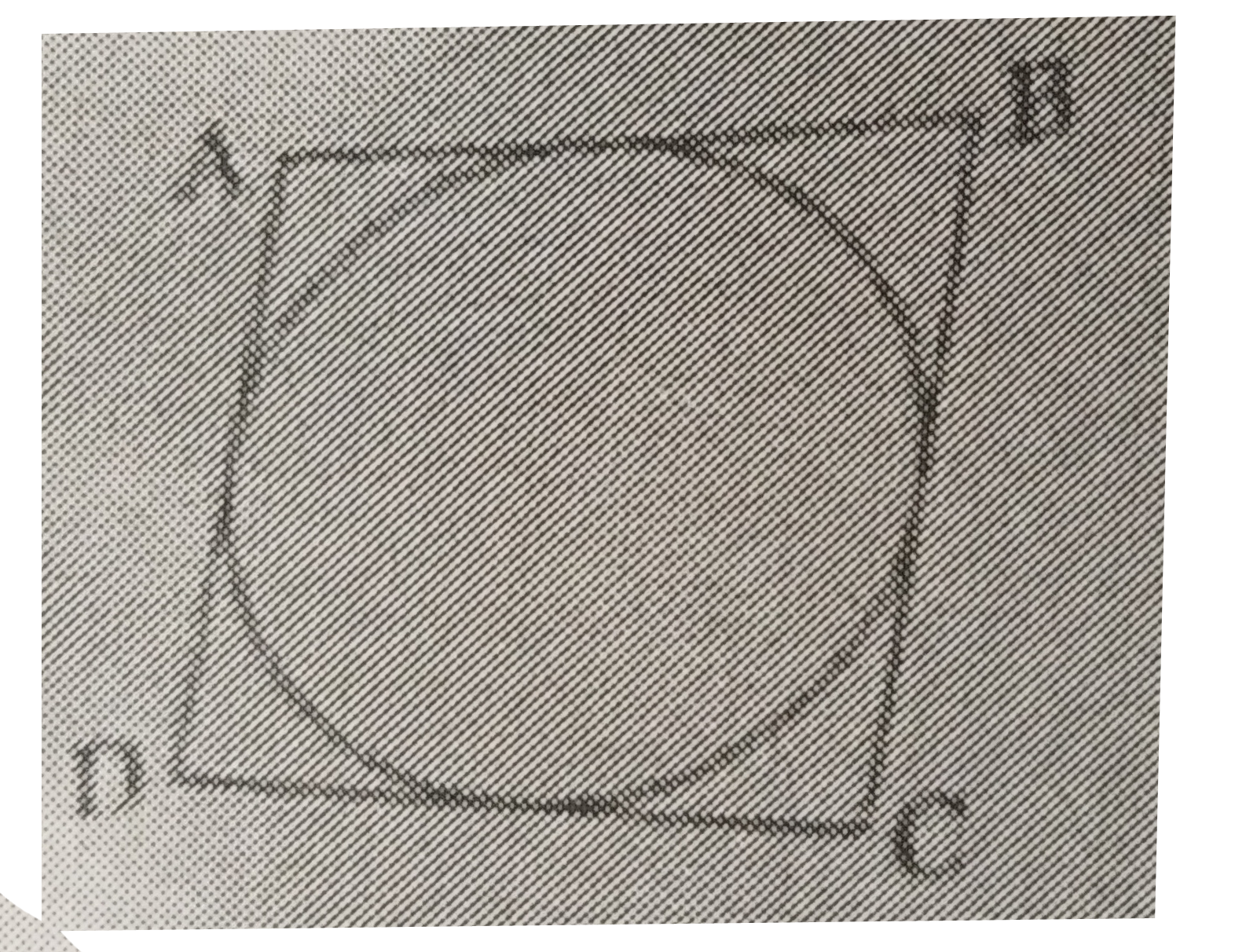A quadrilateral ABCD is drawn to circumscribe a circle. Prove that AB+CD=AD+BC
To prove that in a quadrilateral ABCD that circumscribes a circle, the equation AB+CD=AD+BC holds true, we can follow these steps:
1. Understanding the Quadrilateral:
- We have a quadrilateral ABCD that circumscribes a circle. This means that there exists a circle that touches all four sides of the quadrilateral.
2. Label the Points of Tangency:
- Let the points where the circle touches the sides AB, BC, CD, and DA be P, Q, R, and S respectively. Thus:
- The circle touches AB at P
- The circle touches BC at Q
- The circle touches CD at R
- The circle touches DA at S
3. Using the Tangent Segment Theorem:
- According to the properties of tangents drawn from an external point to a circle, the lengths of the tangents drawn from a point outside the circle to the points of tangency are equal. Therefore, we can write:
- AP=AS (tangents from A)
- BP=BQ (tangents from B)
- CQ=CR (tangents from C)
- DS=DR (tangents from D)
4. Expressing the Side Lengths:
- Now, we can express the lengths of the sides of the quadrilateral in terms of these tangent segments:
- AB=AP+BP
- CD=CR+DR
- AD=AS+DS
- BC=BQ+CQ
5. Substituting the Tangent Lengths:
- From the equalities established in step 3, we can substitute:
- AB=AP+BP
- CD=CR+DR
- AD=AS+DS
- BC=BQ+CQ
6. Adding the Lengths:
- Now, we add the equations for AB and CD:
AB+CD=(AP+BP)+(CR+DR)
- Similarly, we add the equations for AD and BC:
AD+BC=(AS+DS)+(BQ+CQ)
7. Equating the Two Sums:
- Since AP=AS, BP=BQ, CR=CQ, and DR=DS, we can conclude:
AB+CD=AD+BC
8. Conclusion:
- Thus, we have proved that AB+CD=AD+BC.
- We have a quadrilateral ABCD that circumscribes a circle. This means that there exists a circle that touches all four sides of the quadrilateral.
- Let the points where the circle touches the sides AB, BC, CD, and DA be P, Q, R, and S respectively. Thus:
- The circle touches AB at P
- The circle touches BC at Q
- The circle touches CD at R
- The circle touches DA at S
- According to the properties of tangents drawn from an external point to a circle, the lengths of the tangents drawn from a point outside the circle to the points of tangency are equal. Therefore, we can write:
- AP=AS (tangents from A)
- BP=BQ (tangents from B)
- CQ=CR (tangents from C)
- DS=DR (tangents from D)
- Now, we can express the lengths of the sides of the quadrilateral in terms of these tangent segments:
- AB=AP+BP
- CD=CR+DR
- AD=AS+DS
- BC=BQ+CQ
- From the equalities established in step 3, we can substitute:
- AB=AP+BP
- CD=CR+DR
- AD=AS+DS
- BC=BQ+CQ
- Now, we add the equations for AB and CD:
AB+CD=(AP+BP)+(CR+DR)
- Similarly, we add the equations for AD and BC:
AD+BC=(AS+DS)+(BQ+CQ)
- Since AP=AS, BP=BQ, CR=CQ, and DR=DS, we can conclude:
AB+CD=AD+BC
- Thus, we have proved that AB+CD=AD+BC.
Similar Questions
In Figure, a quadrilateral ABCD is drawn to circumscribe a circle .
Prove that
AB+CD=BC+AD
 View Solution
View SolutionIn Figure, a quadrilateral ABCD is drawn to circumscribe a circle .
Prove that
AB+CD=BC+AD
 View Solution
View SolutionA quadrilateral ABCD is drawn to circumscribe a circle. Prove that AB+CD=AD+BC.
or
A circle touches all the four sides of a quadrilateral ABCD. Prove that AB+CD=BC+DA.View SolutionIn Figure, a quadrilateral ABCD is drawn to circumscribe a circle such that its sides AB, BC, CD and AD touch the circle at P, Q, R and S respectively. If AB=x cm , BC=7cm , CR=3cm and AS=5cm , then x= (a) 10 (b) 9 (c) 8 (d) 7
View SolutionIn Figure, diagonal AC of a quadrilateral ABCD bisects the angles A and C . Prove that AB=AD and CB=CD.
View SolutionIn the figure, diagonal AC of a quadrilateral ABCD bisects the angles A and C . Prove that AB=AD and CB=CD
View SolutionThe diagonals of quadrilateral ABCD intersect at O . Prove that ar(ACB)ar(ACD)=BODO
View SolutionThe diagonals of quadrilateral ABCD, AC and BD intersect in O. Prove that if BO=OD, the triangles ABC and ADC are equal in area.
View SolutionIn Figure, diagonal AC of a quadrilateral ABCD bisects the angles A and C . Prove that AB=AD and CB=CD
View SolutionIn a quadrilateral ABCD , given that ∠A+∠D=90o . Prove that AC2+BD2=AD2+BC2 .
View Solution
